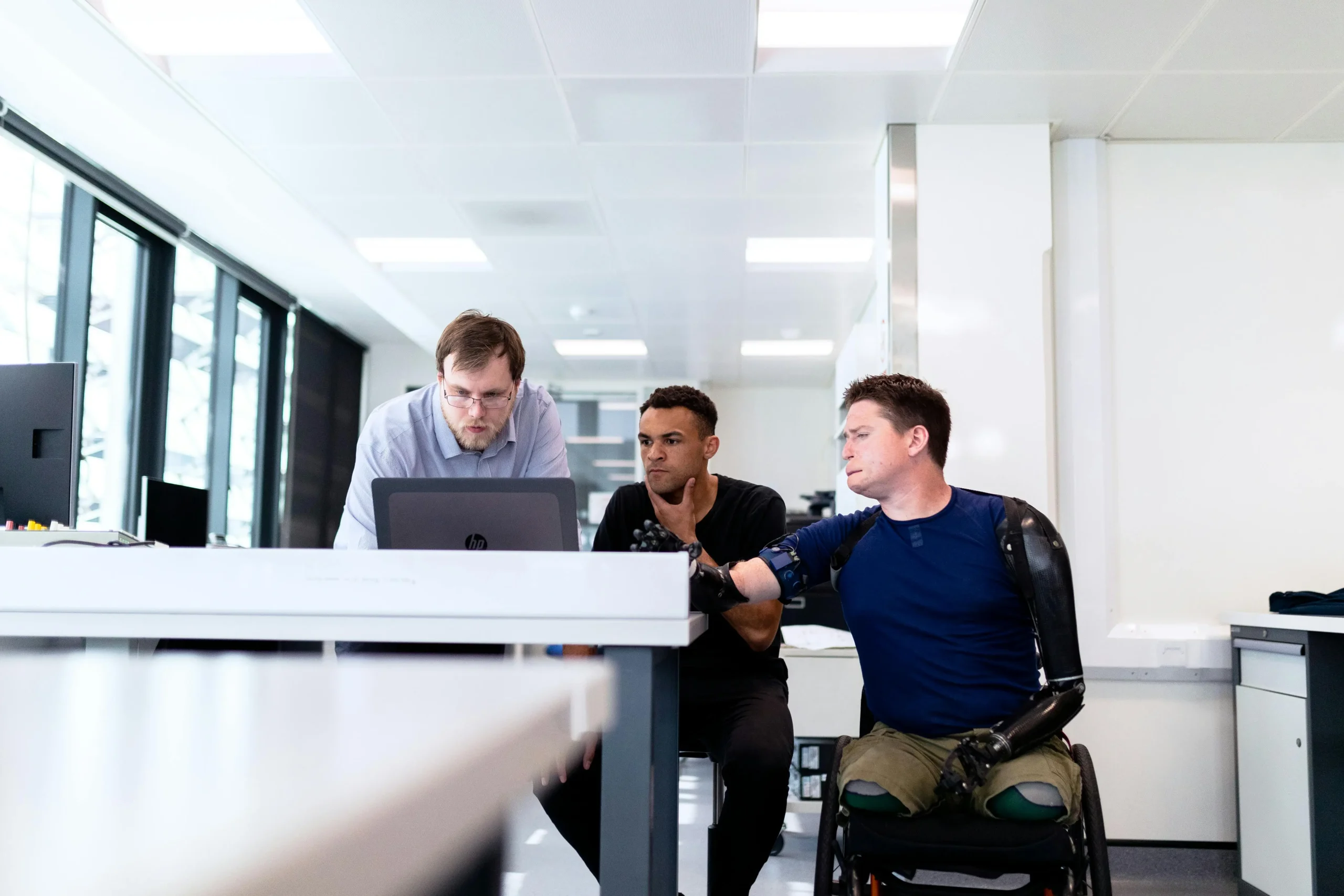In today’s world, diversity and inclusion are buzzwords that dominate discussions on workplace culture, yet many companies still fall short when it comes to hiring differently-abled talent. The question remains: Why aren’t more companies hiring differently-abled individuals?
While the benefits of a diverse workforce are well-known, there are still significant barriers preventing many differently-abled individuals from accessing job opportunities. In this article, we’ll explore the reasons behind this discrepancy and discuss why it’s time for businesses to rethink their hiring practices.
The Benefits of Hiring Differently-Abled Talent
Unique Skill Sets and Perspectives
People with disabilities bring unique perspectives that can foster innovation and creativity within a company. Whether it’s a differently-abled employee’s ability to problem-solve in unconventional ways or their deep understanding of accessibility needs, their skill sets are invaluable. By hiring differently-abled talent, companies can tap into an often-overlooked resource that can drive business success.
Innovation Through Diversity
Think about the most groundbreaking innovations of the past few decades: many were driven by people who faced challenges that others couldn’t even imagine. By hiring differently-abled individuals, you’re not just fulfilling a moral duty; you’re investing in the future of innovation. Diversity fuels creativity, and creativity fuels business growth. Why limit yourself to a homogenous pool of talent when the future is diverse?
Real-World Examples of Success
Many successful companies have already embraced differently-abled talent and seen remarkable results. For instance, Microsoft has long been a leader in hiring people with disabilities, and the impact on their workplace culture and productivity is clear. SAP has also implemented an autism-at-work program, helping to unlock the potential of neurodiverse individuals. These companies demonstrate that diversity isn’t just good for employees; it’s good for business.
Financial Incentives and Government Support
Beyond the ethical and practical benefits of hiring differently-abled talent, there are also financial incentives. Many governments offer tax credits, grants, and other financial assistance to companies that hire people with disabilities. These incentives can offset costs associated with accommodations and make hiring differently-abled talent a more financially viable option for businesses of all sizes.
Common Misconceptions About Differently-Abled Employees
The Myth of Limited Productivity
One of the biggest misconceptions about hiring differently-abled employees is the belief that they will be less productive. In reality, studies have shown that people with disabilities often outperform their non-disabled counterparts in key areas like job performance, retention rates, and attendance. The myth that differently-abled workers are less productive is simply that—a myth.
Addressing Accessibility Concerns
Another barrier to hiring differently-abled talent is the perceived cost and complexity of making workplaces accessible. However, reasonable accommodations don’t always have to be costly or complicated. Simple adjustments, such as providing a flexible work schedule or offering assistive technology, can make a world of difference. And these accommodations often lead to increased employee satisfaction and productivity.
Reasonable Accommodations: What Are They Really?
Reasonable accommodations can range from minor adjustments to major modifications, depending on the type of disability and job responsibilities. Some common accommodations include:
- Modified workspaces for wheelchair accessibility
- Assistive technologies like screen readers or speech-to-text software
- Flexible work hours or the option for remote work
These accommodations are not only legally required in many cases but can also greatly improve employee performance and well-being.
The Myth of a “Specialized” Talent Pool
There’s a common belief that differently-abled individuals only fit into certain specialized roles, but this is far from true. Differently-abled employees are just as diverse as their non-disabled counterparts, with a wide range of skills, experiences, and qualifications. The talent pool is vast, and companies often overlook this fact.
The Legal and Ethical Case for Inclusive Hiring
The Americans with Disabilities Act (ADA) and Other Legal Considerations
The ADA and similar laws around the world have been pivotal in ensuring that people with disabilities have equal opportunities in the workforce. But compliance with disability employment laws is not enough. Companies need to go beyond mere compliance and create workplaces that actively embrace inclusivity.
Compliance vs. True Inclusion: What’s the Difference?
While many businesses comply with accessibility laws, true inclusion requires creating a culture of openness and support. This means not just following regulations but actively fostering an environment where differently-abled employees are valued and given the tools they need to thrive.
Ethical Responsibility and Corporate Social Responsibility (CSR)
From an ethical standpoint, it’s clear that companies have a responsibility to ensure equal employment opportunities for all. But beyond ethics, embracing accessible employment is an essential component of corporate social responsibility (CSR). Companies that lead the charge on inclusivity are seen as socially responsible, enhancing their public image and attracting a broader customer base.
Overcoming Hiring Barriers
The Role of Hiring Managers and HR Professionals
Hiring managers and HR professionals play a critical role in shaping the future of accessible employment. By revisiting traditional hiring practices and adopting more inclusive strategies, they can break down barriers and open the door to a wider talent pool. This includes reviewing job descriptions to ensure they are inclusive, training managers to understand the needs of differently-abled candidates, and making sure the recruitment process is accessible.
Changing Hiring Practices and Procedures
It’s time to move away from rigid, one-size-fits-all hiring processes. Instead, businesses should create processes that allow candidates to showcase their strengths without facing unnecessary barriers. This might mean adapting the interview process to allow for alternative forms of communication or offering extended interview times for candidates who need them.
Creating a Culture of Inclusion
A company’s culture is just as important as its policies when it comes to hiring differently-abled talent. A culture that celebrates diversity and fosters inclusion is more likely to attract and retain talented employees. Promoting awareness and empathy throughout the organization can help remove stigmas and make differently-abled employees feel welcomed.
How Technology Can Help Break Barriers
Technology has made it easier than ever to create accessible work environments. Assistive devices, specialized software, and remote work solutions can help businesses support their differently-abled employees. These technologies enable individuals to perform their jobs to the best of their abilities, often without significant modifications to the workplace.
How to Build an Inclusive Workplace
Best Practices for Creating a Welcoming Environment
Building an inclusive workplace involves more than just hiring a diverse group of employees. It requires creating an environment where everyone feels respected and valued. Inclusive workplace practices include offering flexible work hours, providing accessible facilities, and encouraging open communication.
Onboarding and Training Differently-Abled Employees
Once hired, differently-abled employees should be given the resources and training they need to succeed. This might involve providing specific training on assistive technologies or offering mentorship programs to help them acclimate to the company’s culture.
Building Mentorship Programs
Mentorship programs are an excellent way to help differently-abled employees thrive in the workplace. These programs offer guidance, support, and an opportunity for employees to build relationships with others in the company. Mentorship fosters inclusion and provides the tools necessary for success.
Employee Resource Groups and Support Systems
Employee Resource Groups (ERGs) are voluntary, employee-led groups that aim to create a more inclusive workplace. These groups can offer emotional support, provide a platform for employees to share experiences, and help companies address any unique needs of their differently-abled employees.
Conclusion
As the business world continues to evolve, it’s clear that accessible employment isn’t just the right thing to do; it’s the smart thing to do. By hiring differently-abled talent, companies not only contribute to a more inclusive society but also benefit from the diverse skills and perspectives these employees bring. The future of accessible employment is bright, and it’s time for businesses to lead the way.
Frequently Asked Questions (FAQs)
- What is the best way to accommodate differently-abled employees?
- Providing reasonable accommodations like flexible hours, assistive technologies, and ergonomic workspaces can help employees with disabilities thrive.
- How can I make my company more inclusive for differently-abled candidates?
- Start by revising job descriptions, offering accessible recruitment processes, and fostering a culture of inclusivity throughout your organization.
- Are there financial benefits to hiring differently-abled workers?
- Yes, many governments offer tax incentives and grants to companies that hire differently-abled individuals.
- How do I overcome accessibility concerns in the workplace?
- Begin by assessing your workspace for accessibility, offering assistive technologies, and providing training for managers to address unique needs.
- What are some real-world examples of companies successfully hiring differently-abled talent?
- Companies like Microsoft, SAP, and Ernst & Young have all seen success with their inclusive hiring programs.
- How does the ADA impact hiring practices for differently-abled individuals?
- The Americans with Disabilities Act mandates that employers provide equal opportunities for individuals with disabilities and make reasonable accommodations.
- What steps can hiring managers take to promote inclusivity?
- Hiring managers can review job descriptions, adopt flexible interview processes, and provide diversity and inclusion training.
- How can technology improve accessibility for differently-abled employees?
- Technologies such as screen readers, speech-to-text software, and virtual collaboration tools can help employees with disabilities perform their jobs.
- What are the most common misconceptions about differently-abled employees?
- Misconceptions include that differently-abled employees are less productive, need extensive accommodations, or are only suited for specialized roles.
- How can I ensure that my company is fully compliant with disability employment laws?
- Stay informed about laws like the ADA, provide reasonable accommodations, and train your team on how to support differently-abled employees.
Internal Links:
- Common Challenges Disabled Professionals Face in the Job Market
- The Importance of Accessible Technology in the Workplace
- Inclusive Hiring Practices: How Employers Can Support Disabled Talent













